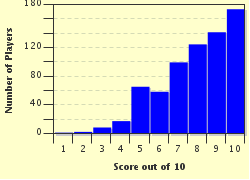Quiz Answer Key and Fun Facts
1. New Zealand has three official languages: English, Maori and NZ Sign Language. The Maori name for New Zealand means "Land of the Long White Cloud". What is the Maori name for New Zealand?
2. The Treaty of Waitangi was an agreement made between the British Crown representatives (including Captain William Hobson - Lieutenant Governor of New Zealand) and Maori chiefs of the North Island of New Zealand in 1840. Where in New Zealand is Waitangi?
3. New Zealand comprises two major islands, the North Island and the South Island. They are the 12th and 14th largest islands in the world. The North Island is the larger of the two islands.
4. The closeness of the bond between Australians and New Zealanders is defined by ANZAC legend but there is a fierce rivalry between the two countries especially on the sporting field, and, in other areas too - Auckland and Sydney are often compared: Both are the most populous cities in their country, each has a world class harbour and each has a sky tower. Given the Sydney Tower opened in 1981 and Auckland's in 1997, is the Auckland tower higher than the Sydney tower?
5. In the capital, Wellington there is a prominent building called the "Beehive". What is housed in this building?
6. In 1931, the town of Napier and nearby Hastings were flattened by an earthquake. When Napier was rebuilt, there was a theme of architecture used in the new buildings. What style of architecture was used?
7. Being just south of the South Island, Stewart island is the third largest island in New Zealand. At 1,476 sq. km. (but with a tiny stable population of 320), it is considerably smaller than the nearby South Island. What is the name of the body of water separating the two islands?
8. Dunedin, a city of 126,000 people is on the south east coast of the South Island and is the second largest city on the South Island and the main centre for the Otago Region. The city was first settled by Scots in 1848. Which city is Dunedin named after?
9. In 1770, Captain Cook sailed down the western side of the North Island, near where the city of New Plymouth is situated, where he saw a snow-capped peak which he called Mt Egmont. New Zealand has a dual (English/Maori) naming policy. Mt Egmont is better known by its Maori name, which is called?
10. Christchurch, a city of over 350 000, is situated on the east coast of the South Island. It is named after Christ Church, a college in England, but what is the name of the river, normally associated with an English bard, that flows through Christchurch?
Source: Author
1nn1
This quiz was reviewed by FunTrivia editor
Tizzabelle before going online.
Any errors found in FunTrivia content are routinely corrected through our feedback system.

